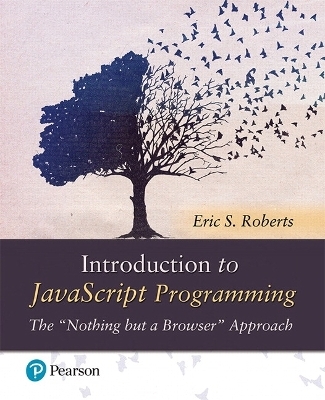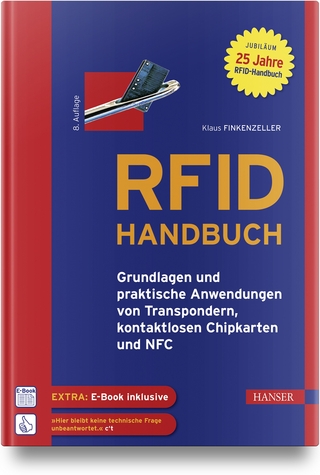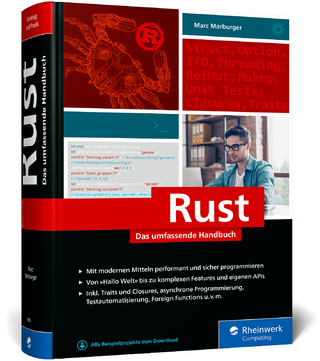
Introduction to JavaScript Programming
Pearson (Verlag)
978-0-13-524585-9 (ISBN)
Introducing the fundamental concepts of programming with JavaScript
A brand new textbook by Eric Roberts, Understanding Programming through JavaScript focuses on the fundamental concepts of programming, and is written for students with no prior knowledge or experience. It draws on a rich pedagogical heritage—including the immersive Karel the Robot microworld, time-testing programming guidelines, and a logical, step-by-step organization—to give them the foundational skills needed to pursue other coding languages, or a career in computer programming. Using the text, students will build their skills and develop live, interactive web applications that really work on web browsers, providing both instant feedback and gratification. This new text includes chapter openers that humanize computing, review questions for student self-testing, and many other valuable features.
About our author Eric Roberts is the Charles Simonyi Professor of Computer Science, emeritus, at Stanford University. Throughout his career, Roberts was a widely acknowledged leader in computer science education and received numerous national and international awards, including the Outstanding Contribution to Computer Science Education Award from the Association for Computing Machinery's Special Interest Group in Computer Science Education (ACM SIGCSE), the Karl V. Karlstrom Outstanding Educator Award from the ACM, and the Taylor Booth Education Award from the Institute for Electrical and Electronic Engineers Computer Society (IEEE-CS).
A Gentle Introduction
1.1 Introducing Karel
1.2 Teaching Karel to solve problems
1.3 Control statements
1.4 Stepwise refinement
1.5 Algorithms in Karel’s world
Summary
Review questions
Exercises
Introducing JavaScript
2.1 Data and types
2.2 Numeric data
2.3 Variables
2.4 Functions
2.5 String data
2.6 Running JavaScript in the browser
2.7 Testing and debugging
2.8 Software maintenance
Summary
Review questions
Exercises
Control Statements
3.1 Boolean Data
3.2 The if statement
3.3 The switch statement
3.4 The while statement
3.5 The for statement
3.6 Algorithmic programming
3.7 Avoiding fuzzy standards of truth
Summary
Review questions
Exercises
Simple Graphics
4.1 A graphical version of “Hello World”
4.2 Classes, objects, and methods
4.3 Graphical objects
4.4 The graphics window
4.5 Creating graphical applications
Summary
Review questions
Exercises
Functions
5.1 A quick review of functions
5.2 Libraries
5.3 A library to support randomness
5.4 The mechanics of function calls
5.5 Recursive functions
Summary
Review questions
Exercises
Writing Interactive Programs
6.1 First-class functions
6.2 A simple interactive example
6.3 Controlling properties of objects
6.4 Responding to mouse events
6.5 Timer-based animation
6.6 Expanding the graphics library
Summary
Review questions
Exercises
Strings
7.1 Binary representation
7.2 String operations
7.3 Classifying characters
7.4 Common string patterns
7.5 String applications
7.6 Reading from the console
Summary
Review questions
Exercises
Arrays
8.1 Introduction to arrays
8.2 Array operations
8.3 Using arrays for tabulation
8.4 Reading text from files
8.5 Multidimensional arrays
8.6 Image processing
Summary
Review questions
Exercises
Objects
9.1 Objects in JavaScript
9.2 Using objects as maps
9.3 Representing points
9.4 Rational numbers
9.5 Linking objects together
Summary
Review questions
Exercises
Designing Data Structures
10.1 Abstract data types
10.2 Implementing a token scanner
10.3 Efficiency and representation
10.4 Representing real-world data
Summary
Review questions
Exercises
Inheritance
11.1 Class hierarchies
11.2 Defining an employee hierarchy
11.3 Extending graphical classes
11.4 Decomposition and inheritance
11.5 Alternatives to inheritance
Summary
Review questions
Exercises
JavaScript and the Web
12.1 A simple interactive example
12.2 An expanded look at HTML
12.3 Controlling style using CSS
12.4 Connecting JavaScript and HTML
12.5 Storing data in the index.html file
Summary
Review questions
Exercises
| Erscheinungsdatum | 15.01.2019 |
|---|---|
| Sprache | englisch |
| Maße | 188 x 230 mm |
| Gewicht | 600 g |
| Themenwelt | Mathematik / Informatik ► Informatik ► Programmiersprachen / -werkzeuge |
| Mathematik / Informatik ► Informatik ► Web / Internet | |
| ISBN-10 | 0-13-524585-0 / 0135245850 |
| ISBN-13 | 978-0-13-524585-9 / 9780135245859 |
| Zustand | Neuware |
| Haben Sie eine Frage zum Produkt? |
aus dem Bereich


